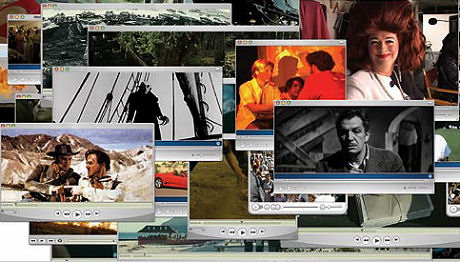“It has become something of a truism that web culture is driven not by traditional, top-down forms of tastemaking like the judgments of professional critics or the strategies of corporate marketers, but rather by the lateral operations of social networks,” observes N.Y. Times critic A.O. Scott in a piece called “The Shape of Cinema, Transformed at the Click of a Mouse.”

“Niches and coteries form organically, as like-minded people bond in cyberspace over shared enthusiasms. And this, in turn, encourages a do-it-yourself approach to production and distribution [of movies]. Just as a band, at least in principle, no longer needs a record label to be heard, so can a filmmaker forego the meddlesome mediation of a studio. Shoot your picture in your living room with your friends, edit it on your laptop, and I√ɬ¢√¢‚Äö¬¨√¢‚Äû¬¢ll watch it on mine, in my living room, with my friends.
“Or something like that. Surely there can never be too many movies. Or, to put it another way, there will always be too many movies, more than anyone can keep track of. That more will be made, and that more will have a chance to be seen, is hardly cause for complaint. But by now we should have learned to regard utopian — or apocalyptic — predictions about the impact of the internet with a measure of skepticism. The technology has yet to be developed that can increase the number of hours in the day, which means that, somehow, we will still need to choose among the thousands of movies at our instantaneous disposal.
“What will guide those choices? Will the social networks that drive taste on the web discover new and neglected works? Will they manage to circumvent both relentless marketing and criticial myopia? If the short history of the internet teaches anything, it√ɬ¢√¢‚Äö¬¨√¢‚Äû¬¢s that any decisive, early answer is sure to be wrong.”









